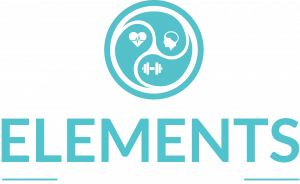
Author: Martin Smith – Head Coach
Level 4 Exercise for Lower Back Pain Certified
Strength & Conditioning for general populations Specialist
How to improve physical wellness in the workplace – a focus on managing pain for desk-based employees.
Many days are missed in the UK from absentees reporting lower back pain. Unison reports that 12 million days a year are lost for this reason.
The cause and solution are actually quite simple in theory, but difficult in practice. This is in part due to the resistance of companies to invest in the tools required to improve these stats, or the lack of knowledge of how to.
As an organisation who have delivered thousands of hours of help in the area of pain management, there are 3 foundational pillars that support the maintenance of an ongoing cycle of pain, and remaining in it
- Extended sedentary periods
Although there is no ‘set time’ for remaining sedentary for which to avoid, the key point to observe on this is that ‘motion is lotion’, ‘movement is medicine’ and activity is awesome!
In simple terms, the chronic shortened position of key areas of both global strength and locomotion create movement compensations which lead to a loss of natural function. We are adaptive creatures, and in physical terms our nervous systems ‘understands’ positions.
If we understand that sitting is natural, then standing becomes unnatural, and when that happens, it becomes harder for us to do. This has a knock on effect in our kinetic chain because the areas we should rely on to keep us upright, balanced and mobile, become under stimulated and therefore under utilised.
Applying a factory reset to our understanding of positions becomes imperative for success in reducing back pain.
2. Poor movement linguistics
By adhering to the above rule of sedentary dominance, our bodies forget the language of movement. Take the example of us in infancy – sitting down in a deep squat position. It’s easy, and done without poor posture applied.
Try it now – sit in as deep a squat position (with your heels down and your head up) as you can for 60 seconds and then come back to me.
Done? How did you find that? I imagine it was tough right, or to be honest, you’d probably not be reading this.
Back to the infant reference. Sure, as we grow, our bones become stronger and less cartilaginous, our limbs lengthen and the demand on range of movement becomes greater – but then again, are there adults who can sit in a deep squat position comfortably like an infant can? Of course there are.
Referencing regions whereby their toilets are holes in the ground, if NEEDING to maintain a squatting position throughout their life was a crucial role in their sustenance of life, would they ever lose it?
Put it this way, has eating ever been challenging for you? I.e the process of chewing and swallowing food. You’ve never given it a second thought because you’ve always needed to do it.
Something to think about.
3. A negative approach to health
The ability to be away from back pain is in YOUR control. That’s right, it’s up to you if you want to remain in pain or not. As bold and brash a statement as that may seem, many things within your control will contribute to whether your back pain remains an issue, or becomes more well managed.
We coach clients on almost every element of their lifestyle away from the gym to help them understand how to realise a pain free existence. The following trifecta forms the base of our overall health – and we have observed across multiple clients when each of these areas improve, as does their overall pain tolerance.
We often encounter clients becoming defensive when we ask for an honest appraisal of the below, and while each circumstance is different, consider whether your ‘reasons’ are just excuses in disguise. Change what you CAN control, and improve as best you can what is outside of it.
A: SLEEP
Quality, uninterrupted sleep is the cornerstone of recovery. Whereas things like kids restlessness in the night, shift patterns and unforeseen circumstances can and do occur, reducing screen time before bed, keeping electronic devices such as phones and TV’s out of the bedroom will immediately improve your ability to allow your Central Nervous System (CNS) to move from an active state to a resting one.
B: EAT
Water. Yes you don’t eat it, but this is the first area of your nutrition to address. Every single action your body takes, every function, every process, every thought, mood, feeling and decision will ALL improve to the best of their ability if your hydration is effective. Start there, the rest will start to fall into place.
Whole foods. In simple terms, if everything you eat comes from single origin foods, which are natural – your ‘visual’ health, body composition, hair, skin and nails will improve very, very quickly.
Take a look at what makes up your diet (as in what you eat, not what diet you are on), and ask yourself, as it currently stands, what is my whole food consumption to non-whole food intake as a rough ratio? If its not 80/20 at least, that should be the first goal!
C: MOVE
We are designed to twist, bend, stretch, lift, carry, jump, crawl, climb and run. If any of those things are deemed as perceived challenging qualities to you, consider – at which point did they stop becoming something you do? If they never have been, you are in a great position to start!
Our bodies adapt positively to movement very quickly – application of things that include the above list will start to regain functions that you may previously have lost. If you work at a desk, consider how often you run updates on key programs or utilities you need for your daily task, chances are it’s often – you can’t do your job without them!
Now consider that participating in the movements outlined in the list above are your own bodies versions of that, what is its job – and are you giving it the updates it needs?
SUMMARY
Download a better version of yourself RIGHT NOW! Starting in January, on Monday, or when you feel ready means it’ll either never happen, or you are viewing it in the wrong way. You have the ability to make tomorrow one step closer to a pain free, happier and more physically content version of yourself.
Can you even afford for that to wait? Tomorrow is never promised. And on that note, if you don’t know where to start, here’s a link to a 12 minute video to which you need no equipment, just yourself, a floor, and a healthy attitude.
https://vimeo.com/435736963/fdd77327f9
Finally, want to GUARANTEE that you make steps forwards and begin to turn around your physical wellness for good? Well fortunately, that’s what we do – that’s right, we guarantee it.
Get in touch if you’re ready to become that better version of yourself.


